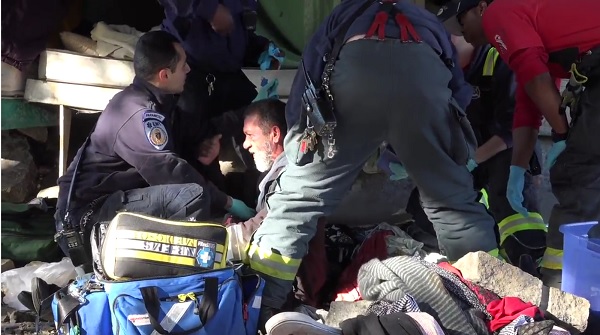latest
Massachusetts Efforts To Address Opioid Overdoses Detailed

By Katie Lannan
The state’s steps to combat the overdose epidemic include funding for 38 syringe service programs, 33 overdose education and naloxone-distribution sites and plans to create a temporary housing “cottage community” on the Lemuel Shattuck Hospital campus for people living in encampments at Boston’s “Mass. and Cass” intersection, a top addiction services official told the Public Health Council.
Preliminary state data published in November tracked an estimated 21 more opioid overdose deaths in the first nine months of 2021 than during the same period last year, for a total of 1,613 fatal overdoses from January through September of this year. In 2020, 2,106 people died of overdoses in Massachusetts.
After reviewing the figures at last month’s meeting, council members asked for an update on state efforts to address overdoses. Deirdre Calvert, director of the Department of Public Health’s Bureau of Substance Addiction Services, briefed the council Wednesday on harm-reduction and overdose prevention activities, including needle exchanges, naloxone distribution, housing programs, post-overdose support and mobile addiction treatment services.
Council member Harold Cox, an associate dean at the Boston University School of Public Health, asked Calvert what is missing from the state’s suite of offerings.
“I don’t think there’s one answer. I think that the rate and the acceleration of the overdoses, we can’t match with our programs,” she said. “We are not bold enough as a country to make the decisions that need to be made, and I think that’s one of the problems, is that we’re being outrun by the drug problem.”
Calvert said federal regulations around methadone access, which have been relaxed during the COVID-19 pandemic, are “incredibly barrier-laden” and “stigma-related.”
New U.S. Drug Enforcement Administration regulations will make it “significantly easier” for treatment providers to implement mobile methadone treatment services and expand access in current “methadone deserts” in rural areas and the western part of the state, Calvert said.
“This will be a game-changer,” she said.
Calvert said the syringe-service programs funded by DPH allow people, usually those who inject drugs, to receive sterile needles and syringes free of charge, dispose of used needles or syringes, access fentanyl-test strips and access testing for hepatitis C and HIV.
The overdose education and naloxone distribution program has distributed more than 584,000 naloxone doses, she said, and more than 32,000 overdose reversals using the state-funded naloxone have been reported back to program staff.
Calvert said the Bureau of Substance Addiction Services is funding nine vendors — in Lowell, Lawrence, Worcester, Springfield, Holyoke, Amherst, Boston, Quincy, Brockton and on the South Shore — to offer low-threshold housing, for which sobriety is not a requirement.
Since the bureau’s grant program started last year, 45 individuals have been housed, she said. Over the course of vendors’ contracts, 284 low-threshold housing units are expected to come online, and 100 of those will be dedicated to individuals residing in the area of the Massachusetts Avenue and Melnea Cass Boulevard intersection in Boston.
About 38 of the 45 people placed in low-threshold housing so far came from the Mass. and Cass area, Calvert said.
She said a “cottage community” of temporary, low-threshold transitional housing, for 25 to 30 people, is planned for the grounds of the Shattuck Hospital in Jamaica Plain.
According to Calvert’s presentation, the “shelter community” will feature 24/7 staffing and supervision, including behavioral health and recovery services, onsite medical services, housing search and transition support, pharmacy and medication-assisted treatment services, and onsite security. It will be overseen by Commonwealth Care Alliance in partnership with Eliot Human Services.
In addition to 18 sleeping shelters — some of which will be designated for couples — the plans call for a 400-square-foot community room, outdoor gathering space and three hygiene shelters offering laundry, accessible restrooms and showers.
-

 Community6 years ago
Community6 years agoNational Shrine of La Salette Festival of Lights 2017 set to begin
-

 Community6 years ago
Community6 years agoMassachusetts State Police looking for good home for retired dogs
-

 Crime6 years ago
Crime6 years agoFall River ranked most dangerous city in Massachusetts according to report
-

 latest6 years ago
latest6 years agoDurfee student allegedly overdoses on marijuana
-

 Community6 years ago
Community6 years agoVideo of Fall River Police goes viral
-

 Causes6 years ago
Causes6 years agoMissing Fall River woman found deceased
-

 Crime6 years ago
Crime6 years agoFall River Police add names to most wanted list
-

 Causes6 years ago
Causes6 years agoFall River teenager reported missing has been found




